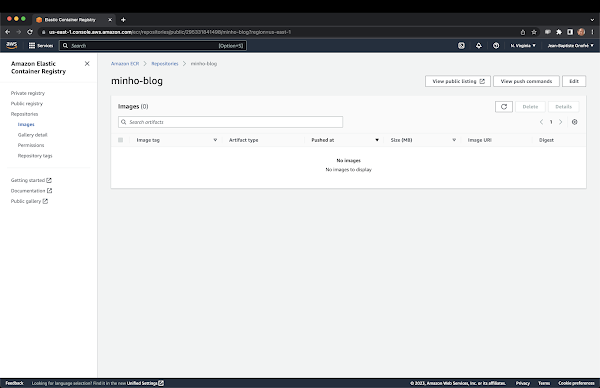Coming in Karaf 3.0.0: subshell and completion mode
If you are a Karaf user, you probably know that Karaf is very extensible: you can add features in Karaf to provide new functionalities.
For instance, you can install Camel, ActiveMQ, CXF, Cellar, etc in your Karaf runtime.
Most of these features provide new commands:
– Camel provides camel:* commands to manipulate the Camel Context, the routes, etc.
– CXF provides cxf:* commands to manipulate the CXF buses, endpoints, etc.
– ActiveMQ provides activemq:* commands to manipulate brokers.
– Cellar provides cluster:* commands to manipulate cluster nodes, cluster groups, etc.
– and so on
If you install some features like this, the number of commands available in the Karaf shell console is really impressive. And it’s not always easy to find the one that we need.
That’s why subshell support has been introduced.
Subshell
Karaf now uses commands scope to create “on the fly” a subshell: the commands are grouped by subshell. As you will see later, depending of the completion mode that you will use, you will be able to see the commands only in the current subshell, and change from one subshell to another.
Let take an exemple. In Karaf itself, we have commands to manipulate bundle and commands to manipulate feature, for instance:
- bundle:list list the bundles
- bundle:start start bundles
- bundle:stop stop bundles
- feature:list list the Karaf features
- feature:repo-list list the Karaf features repositories
- …
In previous Karaf version, to list bundles and features, you did something like this:
karaf@root> osgi:list
...
karaf@root> features:list
...
In Karaf 3.0.0, you can still do the same (just using the new name of the commands):
karaf@root()> bundle:list
...
karaf@root()> feature:list
...
But you can also use subshell:
karaf@root()> bundle
karaf@root(bundle)> list
...
karaf@root(bundle)> feature
karaf@root(feature)> list
...
or
karaf@root()> bundle
karaf@root(bundle)> list
...
karaf@root(bundle)> exit
karaf@root()> feature
karaf@root(feature)> list
...
We can note several things here:
- You have commands to go into a subshell. These commands are created on the fly by Karaf using the scope of the commands. Here, we use the bundle and feature commands to go into the bundle and feature subshell.
- You can see your current subshell location directly in the prompt:
karaf@root(bundle)>
We can see here that we are in the bundle subshell. - We can switch directly from one subhsell to another using the subshell command:
karaf@root(bundle)> feature
karaf@root(feature)> - You have a new exit command to get out from the current subhsell and return to the root level.
You have the choice between different completion mode, depending the behaviour that you prefer.
Completion Mode
The completion mode defines the behaviour of the TAB key to complete commands.
You have three different modes available:
- GLOBAL
- FIRST
- SUBSHELL
You can define your default completion mode using the completionMode property in etc/org.apache.karaf.shell.cfg file. By default, you have:
completionMode = GLOBAL
But, you can also change the completion mode “on the fly” (while using the Karaf shell console) using a new command: shell:completion:
karaf@root()> shell:completion
GLOBAL
karaf@root()> shell:completion FIRST
karaf@root()> shell:completion
FIRST
shell:completion can inform you about the current completion mode used. You can also provide the new completion mode that you want.
GLOBAL completion mode
GLOBAL completion mode is the default one in Karaf 3.0.0 (mostly for transition purpose).
GLOBAL mode doesn’t really use subshell: it’s the same behavior as in previous Karaf versions.
When you type the TAB key, whatever in which subshell you are, the completion will display all commands and all aliases:
karaf@root()> <TAB>
karaf@root()> Display all 273 possibilities? (y or n)
...
karaf@root()> feature
karaf@root(feature)> <TAB>
karaf@root(feature)> Display all 273 possibilities? (y or n)
...
FIRST completion mode
FIRST completion mode is an alternative to the GLOBAL completion mode.
If you type the TAB key on the root level subshell, the completion will display the commands and the aliases from all subshells (as in GLOBAL mode). However, if you type the TAB key when you are in a subshell, the completion will display only the commands of the current subshell:
karaf@root()> shell:completion FIRST
karaf@root()> <TAB>
karaf@root()> Display all 273 possibilities? (y or n)
...
karaf@root()> feature
karaf@root(feature)> <TAB>
karaf@root(feature)>
info install list repo-add repo-list repo-remove uninstall version-list
karaf@root(feature)> exit
karaf@root()> log
karaf@root(log)> <TAB>
karaf@root(log)>
clear display exception-display get log set tail
SUBSHELL completion mode
SUBSHELL completion mode is the real subshell mode (to be honest, it’s my prefered one ;)).
If you type the TAB key on the root level, the completion displays the subshell commands (to go into a subshell), and the global aliases. Once you are in a subshell, if you type the TAB key, the completion displays the commands of the current subshell:
karaf@root()> shell:completion SUBSHELL
karaf@root()> <TAB>
karaf@root()>
* bundle cl config dev feature help instance jaas kar la ld lde log log:list man package region service shell ssh system
karaf@root()> bundle
karaf@root(bundle)> <TAB>
karaf@root(bundle)>
capabilities classes diag dynamic-import find-class headers info install list refresh requirements resolve restart services start start-level stop
uninstall update watch
karaf@root(bundle)> exit
karaf@root()> camel
karaf@root(camel)> <TAB>
karaf@root(camel)>
backlog-tracer-dump backlog-tracer-info backlog-tracer-start backlog-tracer-stop context-info context-list context-start context-stop endpoint-list route-info route-list route-profile route-reset-stats
route-resume route-show route-start route-stop route-suspend
Tips
The “old” full qualified command names are still valid. So, you don’t have to change anything in your scripts, you can use:
karaf@root()> feature:install
karaf@root()> ssh:ssh
...
You have the choice: use the completion mode that you prefer, you can always change the mode when you want using the shell:completion command.
My preference is for the SUBSHELL completion mode. Using this mode, you don’t see a bunch of commands on the root level, just the subshell switch commands. I think it’s clear and straight forward. When you “extend” your Karaf runtime with a lot of additional features, it’s interesting to have commands grouped by subshell.


Comments
Post a Comment